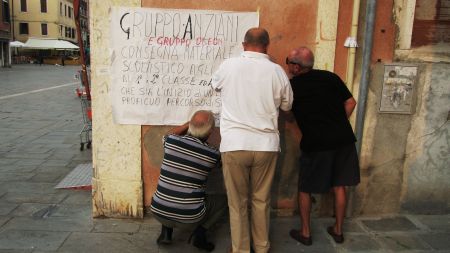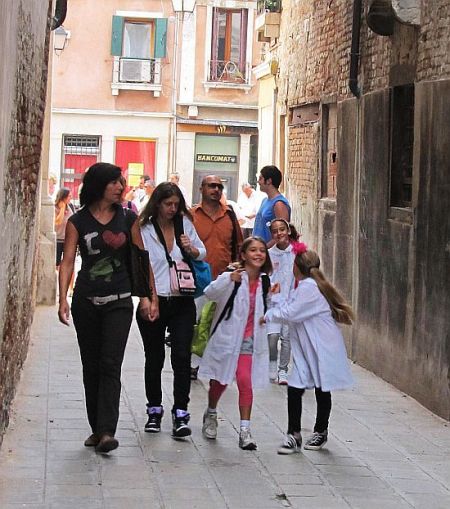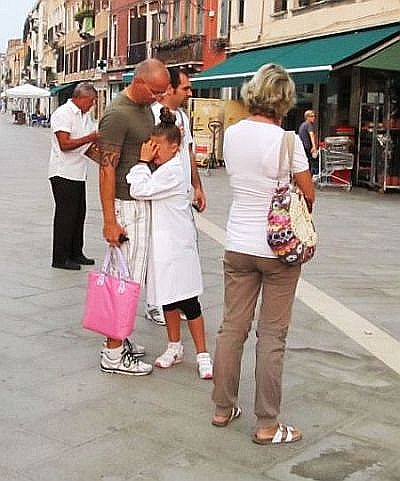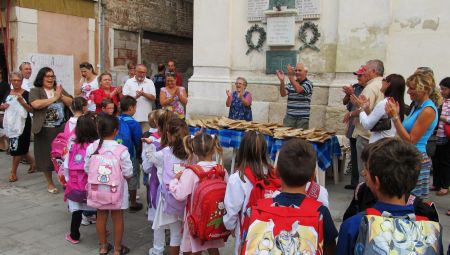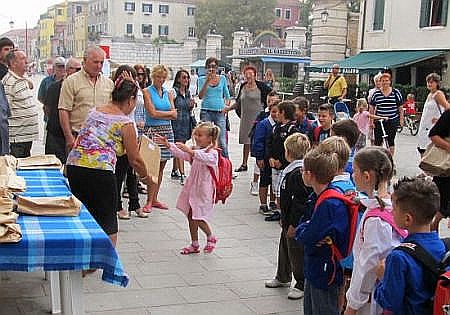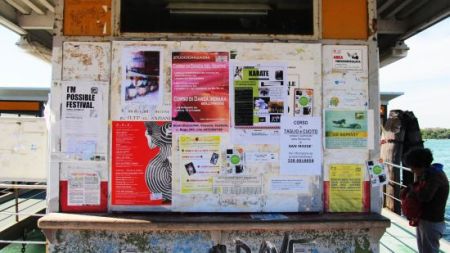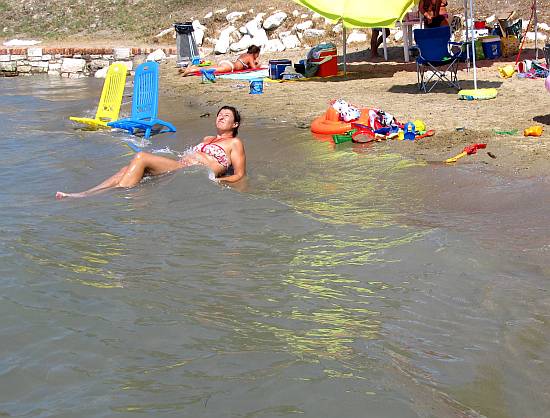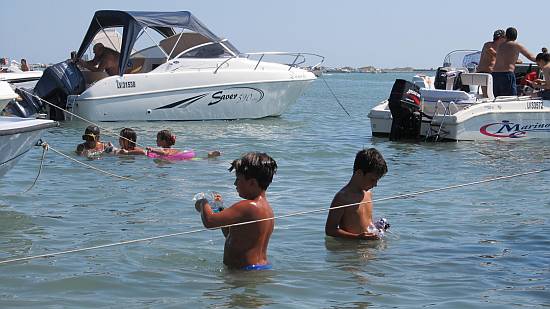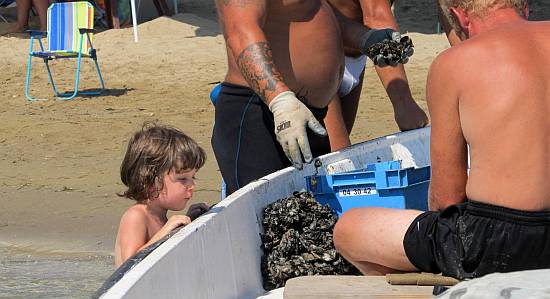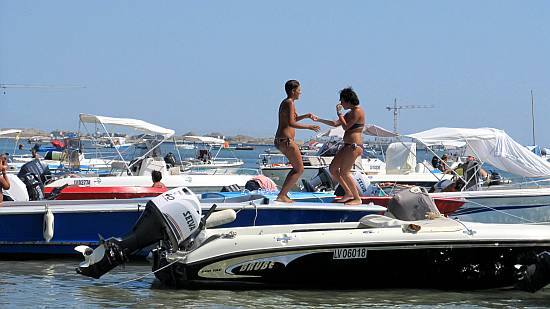I went out this morning on a series of errands and came home more perplexed than when I left. Perplexity is likely to increase wherever humans are to be found, and outside the door there is quite a supply of them.
Example: The little boy and his father who were walking toward me not far from via Garibaldi. As they passed, I heard the boy ask, “E’ bella Parigi?” Is Paris beautiful?
Considering that Paris is the #1 tourist city destination on earth (not made up), it’s not unlikely that his father had been there. What bemused me was that a seven- or eight-year-old boy — from Castello, no less, meaning no disrespect — was at all curious about Paris — that he even knew it existed. If school were in session, I’d have supposed he needed to know for some enigmatic project. But all by himself, he wants to know if Paris is beautiful? Zounds! Where will it end? Next thing you know, he’ll be wanting to construct the Gobi Desert in a bottle, or learn to compose haiku.
Now, though, I wonder if he was talking about Paris Hilton. But no, impossible. Nobody would call her Parigi Hilton.
Still, this is nothing. Consider what happened somewhat earlier on the #5.1 vaporetto going from San Zaccaria to the Lido.
I get on. It’s crowded. So far, so normal.
Down in the hold every seat is taken, and there are plenty of people in the aisle. I edge into a small sliver of space. I turn toward the bow and idly watch the rest of the people getting on.
You should know that the four first seats on the starboard and port sides (two pairs facing each other) are officially reserved for people in the following four categories: Pregnant women, women with children, an injured person, an old person. An adhesive label on each seat demonstrates symbols for these, with the clarification in Italian and English that “old” means 70 and up.
You should also know that these seats are routinely taken by whoever wants them, of whatever nationality or condition, and that people — usually Venetian — of the four appropriate categories almost always have to ask (tell, actually) someone not old or otherwise incapacitated to get up and give them their seat. Sometimes these requests are not polite.
This morning all four seats are taken. Normal. One of them is occupied by a young man, somewhere between 20 and 25.
An old battle-axe comes down the steps and sees that all the seats are occupied. Normal. The young man does not get up. Also normal, unfortunately. It’s a rare person who gets up for the old and infirm or pregnant, unless their mother or wife commands them to do so.
The elderly man sitting on the aisle gets up and gives her his seat. Not very normal, but very nice.
Seated, the old lady fixes the young man with a stadium-floodlight glare, and a gesture of explication intended to clarify that he doesn’t belong where he’s sitting. Also normal, but usually ineffectual.
But wait! He gets up! He doesn’t debate, he doesn’t rebut, he just gets up and goes to the aisle, where he stands with his beach stuff for the rest of the trip.
This is incredible. First, because he responds, and second, because he has not vacated the seat for anyone in particular. He has merely vacated the seat because he’s supposed to. The usual response would have been along the lines of “Well you’re sitting down now, so you obviously don’t need a seat, so get off my back.”
Meanwhile, there’s an empty seat! Manna from heaven! Water from the rock! But does somebody else nab it? No! This is where the strangeness really begins. The vaporetto is full, yet not one single person makes the tiniest move toward that seat. True, it’s by the window, which means climbing over the two people facing each other on the aisle, but this is a tiny inconvenience compared to the dazzling value of finding a place to sit.
I am here to tell you that that seat remained empty for the rest of the trip. Nobody took it. When we pulled up to the Lido, it was still empty. Empty seats on vaporettos are the vacuum which nature is said to abhor — they actually cannot exist. It was as if some extraordinary force-field had surrounded it, repelling humans. There the seat was, and there it remained, a tiny island of space in the midst of a sea of people.
Back to the young man. Why did he do this? There could be only one explanation: He was some well-brought-up, easily cowed visitor from some Anglo-Saxon land, where floodlight-glares convey real meaning and inspire real reactions. I had to find out.
So I tapped him on the shoulder and asked if he spoke English. A few pleasant but broken words revealed that he didn’t, very much. Italian? Much better!
It turns out that not only was he Italian (I presume he still is), but he comes from Mestre, just over the bridge. Which makes the entire event utterly incomprehensible.
There’s more!
I was standing in the shade of the dead ticket booth by the vaporetto dock at the Giardini, waiting for Lino to get home from rowing. Two men were talking just behind me. They were electricians, or something, doing some little task for the transport company which involved rolling up bits of cable and suchlike.
One was talking to the other. He said (translation by me, obviously):
“I was in Jesolo (a nearby beach town) and I was standing in line at the checkout at the supermarket.
“There was an old lady behind me with a cart full of stuff.
“She asked me, ‘Young man, could you let me go before you? I left a pot cooking on the stove.’
“And I said, ‘Sorry, but I left my two-month-old son out in the car alone.’
“She said, ‘ARE YOU CRAZY??’
“So ‘I’m crazy leaving my kid in the car?’ I said. “You left the pot cooking on the stove.'”
I just started laughing. Because it was obvious to him (and to me) that the untended pot was a fable, something she made up so she could jump ahead. Little old people can be brilliant at inventing these fake dramas.
“If she’d said, ‘My feet are killing me,’ I’d have let her go ahead,” he told me. “But a pot on the stove? Naaah.”
Now that I come to think of it, I don’t know whether his kid in the car was a fable, too. It wouldn’t surprise me. He was pretty sharp.
All of this happened before noon today. I need to take my brain in for a 5,000-mile checkup; I think some parts are wearing out.

